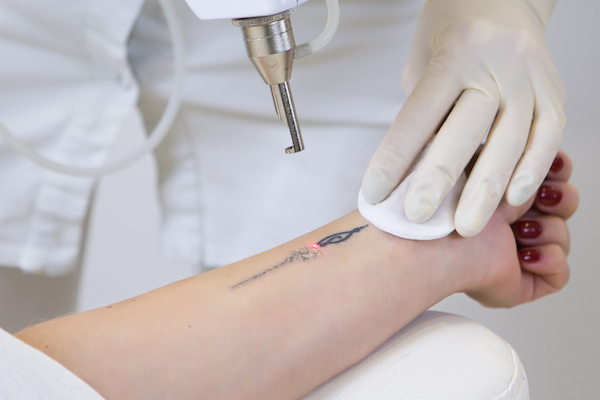
The process of tattoo removal using lasers is known as laser tattoo removal. This technology works by delivering short bursts of intense laser light to the tattooed area, targeting the tattoo ink while leaving the surrounding skin relatively unaffected.
The laser emits a specific wavelength of light that is absorbed by the tattoo ink particles. The rapid absorption of the laser energy causes the tattoo ink to break down into smaller fragments. These fragmented ink particles are then gradually eliminated by the body’s immune system over time.
Q-switched Nd:YAG laser: This laser emits light at two different wavelengths, making it effective for treating a broad range of tattoo ink colors, including dark ones like black and blue.
Q-switched Alexandrite laser: This laser is especially useful for removing blue and green tattoo pigments.
Q-switched ruby laser: While less commonly used today, this laser is effective for removing blue, green, and black inks.
The choice of laser depends on the colors and types of tattoo pigments present in the skin.
It’s important to note that complete tattoo removal usually requires multiple laser treatment sessions. The number of sessions needed depends on various factors, including the size and color of the tattoo, the depth of the ink, the age of the tattoo, and individual skin characteristics. Additionally, some tattoos may not be entirely removable, and there might be some residual ink or scarring.
Laser tattoo removal is generally safe and well-tolerated, but it can cause some discomfort during the procedure. Patients often describe the sensation as similar to the snap of a rubber band against the skin. To mitigate this discomfort, Serendipity offers lidocaine numbing to the area so the treatment is relatively painless. After the treatment, there may be temporary redness, swelling, or blistering, which typically subsides over time.
It is essential to have tattoo removal performed by a qualified and experienced medical professional or dermatologist to minimize the risk of complications and to ensure the best possible results. They can assess your tattoo and skin type and create a personalized treatment plan tailored to your specific needs.